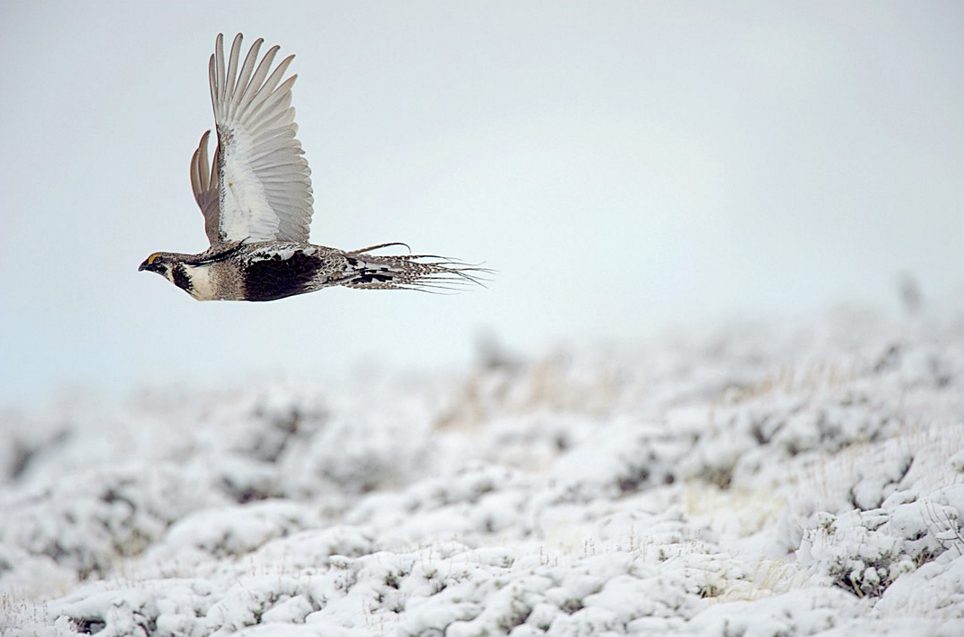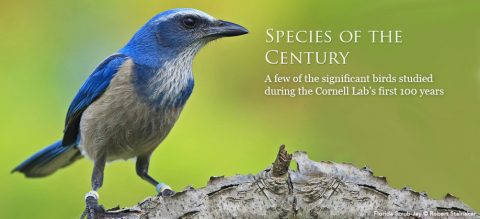A Vanishing Species in Plain Sight: Gunnison Sage-Grouse
By Gerrit Vyn
From the Winter 2015 issue of Living Bird magazine.
January 15, 2015
Moments before flying right past me, this male Gunnison Sage-Grouse had been displaying on a snow-covered slope in Colorado’s Gunnison Basin. The April snowstorm hadn’t deterred the males from strutting and courting the females but the passing of a Golden Eagle scattered the birds in every direction.
Watching and listening to Gunnison Sage-Grouse up close, it’s hard to believe they weren’t described as a unique species until the year 2000. Superficially they are similar to the wide-ranging Greater Sage-Grouse, but their courtship displays reveal some striking differences. Specialized feathers ringing their necks called “filoplumes” stick up like scraggly wires in Greater Sage-Grouse, but when Gunnison Sage-Grouse display, they jerk their heads, causing their thicker, longer filoplumes to whip around, an eye-catching addition to their display. Gunnison Sage-Grouse also sound like a bubbling pot of mud, making nine pops at a time, in contrast with Greater Sage-Grouse, which produce just two pops, with a sound like an explosive rubber ball in between the pops.
Fifteen years ago, by the time people recognized that the Gunnison Sage-Grouse was a new species in plain sight, it had already disappeared from 90 percent of its range. Today it is one of the rarest birds in the United States. Fewer than 5,000 remain in seven fragmented populations in Colorado and Utah. In November 2014, the U.S. Fish and Wildlife Service listed the species as threatened under the Endangered Species Act, designating 1.4 million acres of critical habitat. But the future of this unique and special species also depends on private landowners, ranchers, and developers taking voluntary steps to ensure the species’ survival.
The plight of the Gunnison Sage-Grouse is a story about one of our country’s most overlooked natural ecosystems. Many people don’t realize how much sageland habitats have been destroyed or degraded, the extent of the wildlife we have lost, or the value of the wildlife that still struggles to survive there. In 2009, when I shot this photo, I was part of an expedition to capture some of the first high-quality video and audio recordings of Gunnison Sage-Grouse for the Cornell Lab’s Macaulay Library, to improve the scientific understanding and public awareness of this little-known species. Looking ahead to the future of sageland habitats, which extend across 11 states, the Lab’s Multimedia team is now working on a documentary film and educational materials to bring attention to these understated but beautiful landscapes and the truly special wildlife that reveals itself when you get up close to watch and listen.

All About Birds
is a free resource
Available for everyone,
funded by donors like you
American Kestrel by Blair Dudeck / Macaulay Library



